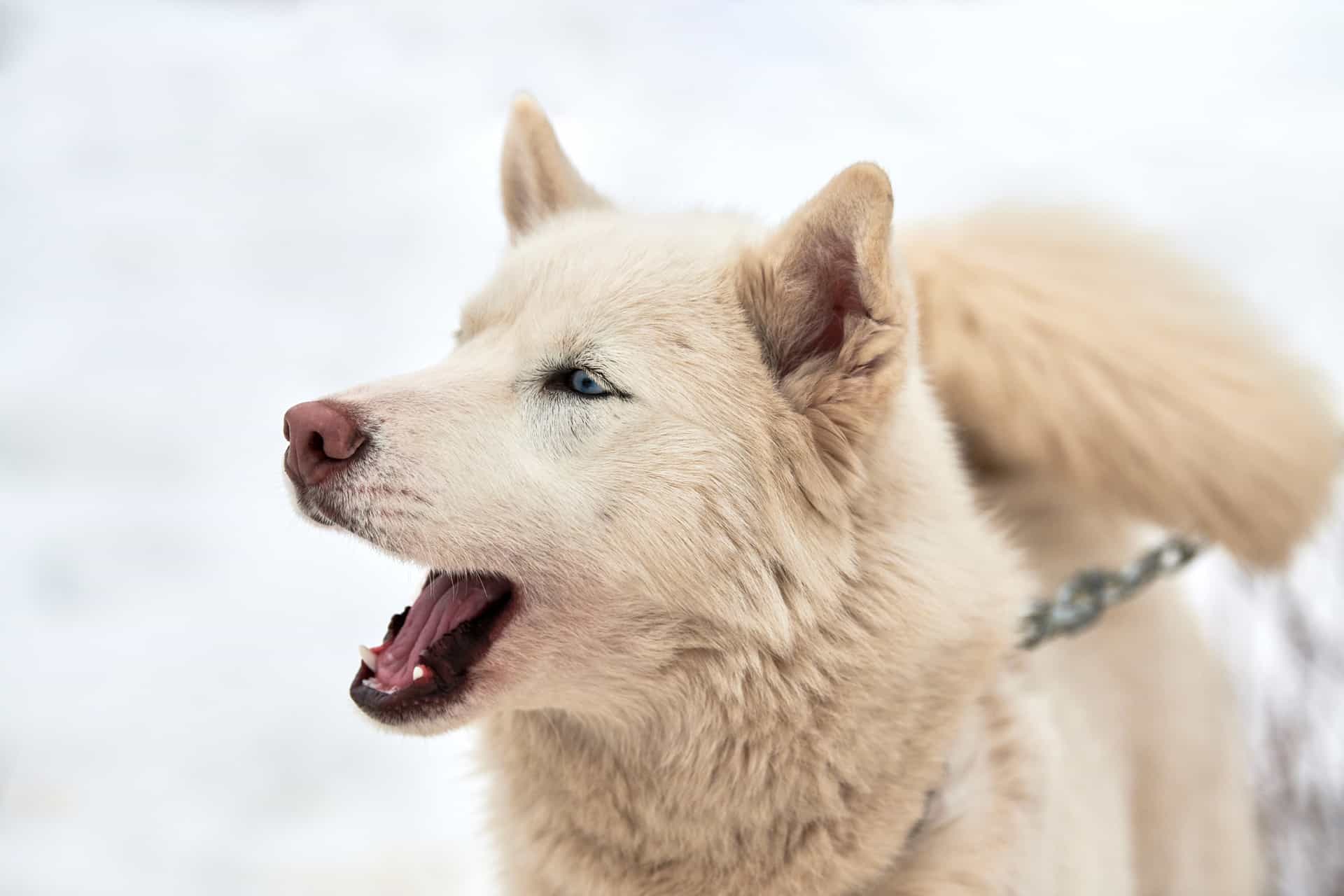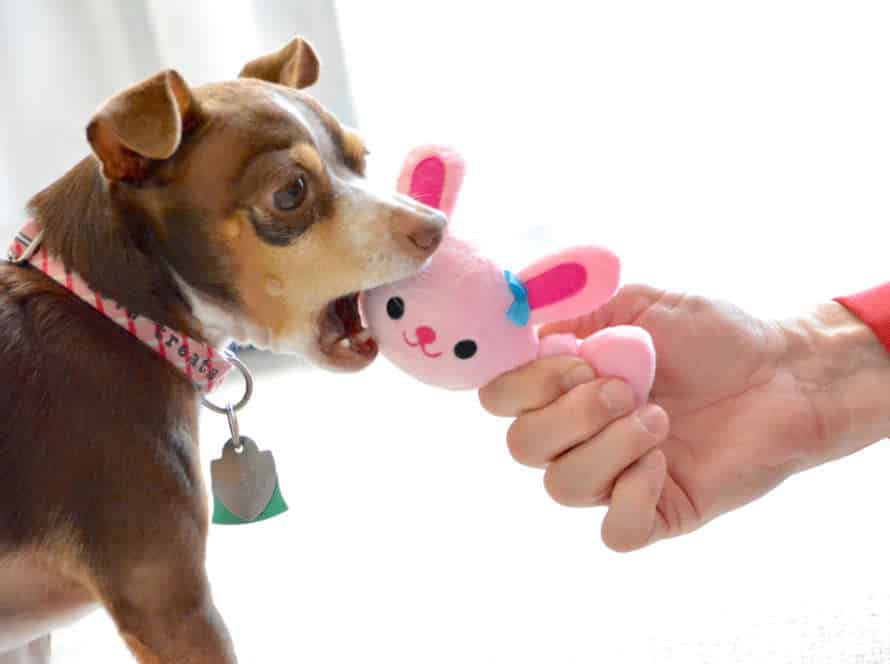Training Your Dog to Stop Barking on Command
Training your pup to be quiet on command can be difficult but also rewarding. It strengthens the bond between you and your furry buddy. Here are a few tips to help you:
- Start with basic obedience training – Teach your dog commands like sit, stay and come.
- Use positive reinforcement – Offer treats, praise, or a toy when they obey the command.
- Stay consistent – Use the same command each time, like “Quiet” or “Enough”. Everyone in the house should use the same command.
- Exercise and attention – A pooch that’s had enough exercise and playtime is less likely to bark too much.
- Get help – If the barking continues, or if you need guidance, hire a professional dog trainer.
Remember, patience and consistency are vital to train your pup to be quiet.
Understanding Your Dog’s Barking Behavior
Understand why your dog barks. It’s a normal behavior for dogs to communicate, be alert, or react to stress, fear, or excitement. Once you understand why they bark, you can start teaching them to stop barking on command.
Why Do Dogs Bark?
Dogs bark to communicate. It’s important to know why. Here are some reasons:
- Territorial: They guard their home and family. Barking keeps intruders away.
- Alarm: Barking warns of danger or threats.
- Attention-Seeking: Dogs bark for attention. Until their demands are met.
- Anxiety: Excessive barking can be caused by fear, stress, or separation anxiety.
- Boredom: Boredom or frustration can lead to barking.
Once you know why your dog barks, it’s easier to train them. Use a verbal cue, like “quiet“, and reward good behavior with treats and praise. Be consistent and patient. Remember – never yell or hit your dog. This can cause anxiety and aggression.
Different Types of Barking
Barking is a way dogs communicate. It can show different feelings and actions. Identifying the type of barking can help you understand your pet. Here are some common kinds:
- Alert Barking: Usually short and sharp. They may stand up or lean forward. This happens when something catches their interest.
- Play Barking: High-pitched and repetitive. They may wag their tail and jump around. This is usually harmless.
- Demand Barking: Insistent and persistent. Used to get attention or what they want.
- Anxiety Barking: Accompanied by behaviors like pacing or whining. A sign of fear or stress.
By understanding the types of barking, you can train your dog to stop. A pro trainer can help you make a plan based on your pet’s needs.
Identifying Triggers for Barking in Your Dog
Tackling your pup’s barking is key to controlling it and teaching it to stop yelping on command. Here are some common barking triggers and how to manage them:
- Alert Barking – This happens when your pup spots someone/something and feels the need to caution you. To deal with this, use a command like “quiet” and reward good conduct with treats. Training your pup to stay chill around distractions is also useful.
- Attention-Seeking Barking – Your dog may bark for your attention when it wants to be fed, petted, or played with. To handle this, ignore your pup when it barks. Train it to do something else like sitting, and use positive reinforcement to give praise for good behaviors.
- Separation Anxiety Barking – Your pup may bark too much when you leave it home alone. To manage this, slowly get your pup used to your absence. Make soothing noises in the background and give it interactive toys. Professional dog trainers can also help you out.
Remember: Being consistent and using positive reinforcement is key to training your pup to stop barking on command. Show patience and give your pup lots of exercise, love, and attention to prevent unnecessary barking.
Training Techniques for Stopping Barking
Training your pup to hush on command? Sounds tricky! But with patience and consistency, it can be done. There are many techniques and methods to teach your dog to be quiet. The key thing is to stay consistent. So, what are the training techniques you can use to help manage your dog’s barking? Let’s find out!
Positive Reinforcement Training
Positive reinforcement training is a kind and successful way to train dogs. It focuses on praising wanted actions instead of punishing undesired ones. To stop barking, positive reinforcement is superb. Here are some ideas to help:
- Begin by teaching your pet a “quiet” command. Pick a word or sound that you’ll use regularly to tell your pup to stop barking.
- When they bark, wait for a moment of peace then say “quiet” in an even, distinct voice.
- Right away give them a treat or praise when they pause and remain silent for a few seconds.
- Do this process reliably to affirm the wanted behavior.
Avoid using punishment or negative reinforcement as this may cause worry and misunderstanding for your pup. Focus on rewarding their progress and making a cheerful connection with quiet conduct.
Clicker Training Basics
Clicker training is a positive reinforcement technique used to train dogs. It uses a clicker to mark desired behaviors, followed by a reward.
Get your pup used to the clicker. Click and treat until they understand the sound and the treat are connected.
Choose a behavior to train, e.g. sitting. Wait for your pup to do it. Click the clicker, then reward them with a treat or praise.
Repeat this process, consistently clicking and rewarding when your dog does the desired behavior.
Your pup will learn the behavior is linked with the clicker sound.
To teach your pup to stop barking on command, use the clicker to mark quiet behavior. Reward them with a treat.
With patience and consistency, your pup will learn to stop barking on command.
Desensitization and Counter-Conditioning
Desensitization and counter-conditioning are useful methods for training dogs not to bark.
Desensitization is when you slowly introduce them to the thing that makes them bark, such as the doorbell or a visitor. This helps them get used to the stimulus and lessens their reaction.
Counter-conditioning is when you change their response from negative to positive. To do this, give them treats or toys when they’re near the trigger.
By using both techniques, you can teach your dog to stop barking when you tell them to.
Remember: Training takes patience and consistency. Start with short sessions and gradually increase the time as they make progress.
Voice and Body Language Commands
Voice & body language commands are a good way to teach your pup to stop barking on command. Follow these steps:
- Choose a clear voice command like “quiet” or “enough“. Speak firmly, but not too loud.
- Hold up a hand when you say the command. As soon as pup starts barking say the command and show the hand gesture.
- Reward pup with treats when they stop barking.
- Repeat this process multiple times a day.
Pro tip: Sticking to the same command & gesture is key for training your pup. Use them every time your pup barks to reinforce the behavior you want.
Teaching “Quiet” and “Stop” Commands
Teach your pup the “quiet” and “stop” commands for better behavior and a happy pup!
“Quiet” Command:
- Wait for your dog to bark.
- Say “quiet” firmly and calmly.
- Reward after a few seconds of quiet.
- Increase the time between barking and treat.
“Stop” Command:
- Play with your pup then hold up hand while saying “stop”.
- Praise and give treat when pup stops playing and looks at you.
- Gradually add distractions during playtime.
Pro Tip: Consistency is the key. Be patient and reward the good behavior consistently. This will help form positive habits.
Body Signals and Gestures to Stop Barking
Training your pup to stop barking on demand can be tough, but using body signals and gestures can help!
Two body signals and gestures to help stop barking are:
- The palm-down hand gesture: When your dog begins to bark, hold your palm down, facing away from them and say “quiet” or “enough”. This visual cue tells them to stop and the verbal cue reinforces the connection.
- The turn away: Another great signal is to turn away from your dog when they start barking. This takes away their attention, which will discourage them from barking more. Only turn back when they stop barking, give them praise, a treat and then repeat the command to really reinforce the cue.
Using body signals and gestures in your training can help you communicate with your pup in a new way and increase the chances of success in stopping their barking.
Maintaining Good Barking Habits in Your Dog
Train your pup right! It makes a big difference in controlling their barking. Teach them to bark when you want, and to stop when you don’t. Knowing when to bark and when not to is key. Here are some tips for training your dog to understand barking:
Consistency is Key
Consistency is the answer when trying to teach your pup to obey the “calm” command and build good barking practices. Keep these tips in mind:
- Stick to the same “quiet” command each time your doggo barks unnecessarily.
- Reward your pet with treats or praise when they obey the command.
- Don’t give them attention or let them outside when they bark, or you can accidentally teach them the wrong thing.
- Be patient and consistent during the training. Dogs need time and practice to learn new behaviors and create new habits.
Remember, steady training is necessary for building good barking habits for your pup, and for a peaceful home for both you and your pet.
Avoiding Reinforcing Bad Behaviors
Dogs bark naturally in response to everyday situations or to communicate. But, too much barking can be annoying and even become a habit if not addressed.
To keep good barking habits with your pup, don’t reinforce bad behaviors by responding calmly and consistently. Here are some tips for training your dog to stop barking on command and reinforcing good habits:
- Use simple and steady commands like “quiet” or “stop“.
- Reward your pup when they obey your command and stop barking.
- Don’t give in to your pup’s barking requests, as it encourages bad behavior.
- Try to find what causes your pup’s excessive barking, like boredom or anxiety.
- Give your pup enough physical and mental exercise to prevent too much barking.
- Also, use a clicker and treats to teach your pup that being quiet means receiving a reward.
Identifying and Addressing Anxiety and Other Underlying Issues
Identifying and dealing with anxiety and other root causes is key to keeping good barking habits and teaching your pup to bark on command. Here’s how:
- Spot the triggers: Monitor your dog’s barking and figure out what’s causing it. Is it anxiety, boredom, or territorial instincts? Once you know, you can better handle it.
- Address the root cause: If your dog has anxious behaviors, such as pacing or whining, provide more exercise, mental stimulation, and socialization to address these issues.
- Use reward-based training: Train your pup to bark on command by using a reward system. Give them treats or praise when they obey your command to stop barking.
- Consistency is essential: Always reinforce good barking behavior by rewarding them for following your commands and using positive reinforcement to encourage this behavior.
By addressing the issues and consistently training your pooch, you can help them build good barking habits and follow your commands.
Frequently Asked Questions
1. How do I train my dog to stop barking on command?
There are several methods you can use to train your dog to stop barking on command. One method involves teaching your dog the “quiet” command and rewarding them when they stop barking. Another method involves distracting your dog with a toy or treat when they start barking and rewarding them when they stop. It’s important to be patient and consistent with your training.
2. Is it possible to train an older dog to stop barking on command?
Yes, you can train an older dog to stop barking on command, although it may take a little longer than with a younger dog. The key is to be consistent and patient with your training, and to make sure you are using positive reinforcement techniques that reward good behavior.
3. What should I do if my dog still barks after training?
If your dog still barks after training, it may be a sign that they need more practice or that they are experiencing anxiety or stress. In this case, it’s important to continue training and seek the help of a professional dog trainer or behaviorist if necessary.
4. What kind of treats should I use for training?
It’s important to use treats that your dog really likes for training, such as small pieces of chicken, liver, or cheese. You can also use special training treats that are made specifically for dogs, which are often low in calories and easy to break into small pieces.
5. How long does it take to train a dog to stop barking on command?
The length of time it takes to train a dog to stop barking on command can vary depending on the dog and the training method used. Some dogs may learn quickly, while others may require more time and practice. Generally, it’s important to be consistent and patient with your training, and to celebrate small successes along the way.
6. Can punishment be used to stop barking?
No, punishment should not be used to stop barking. Punishing a dog for barking can actually make the problem worse and lead to other behavior problems. It’s important to use positive reinforcement techniques to train your dog to stop barking on command.







